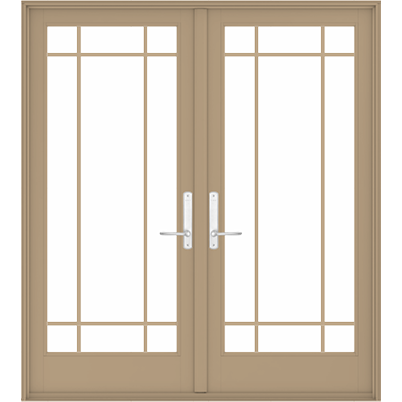Tips
How to pick out basement windows
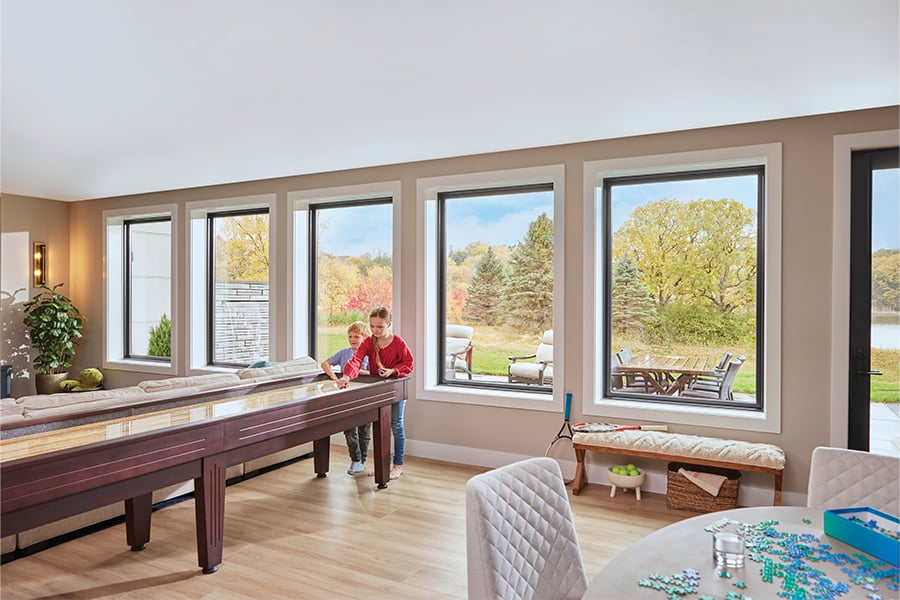
Picking out windows for the basement or cellar presents some unique challenges. Maybe you’re looking for a window that can handle the damp conditions near the ground, maybe you’re thinking about improving safety and security, maybe you just want an economical option for this secondary space. Whatever your priorities, we can point you in the direction of a good basement window.
What kind of windows are best for a basement?
Awning, casement, gliding, and picture windows are popular basement window choices. Any of these might be right for your basement. For example, if yours is a new construction home, you might be able to plan for a large window well that will accommodate taller windows, like casements. If your basement lacks much above-ground space, horizontally oriented awning windows can make a great choice. And if you’re adding a basement bedroom, you’ll need a window that meets egress requirements.* In which case, you’ll find options among both our casement and gliding windows. Whatever the scenario, there’s a basement window that’ll suit your space and meet your needs — let's narrow down your options.
The best replacement basement windows
If you’re looking to replace an existing basement window, consider awning or gliding windows. Both work well when there isn’t a lot of above-ground space due to their shapes, and a gliding window is available in sizes large enough to meet egress requirements.
Here are more details on these windows:
Awning window
Where it works well: If your basement doesn’t have a lot of above-ground wall space, this window’s horizontal shape makes it a good fit. It hinges from the top and opens outward so you can let in a fresh breeze in any weather — and you don’t have to worry about letting pests in if you get an insect screen with it.
An option to consider: The 100 Series Awning Window is a great option. It’s made of virtually maintenance-free Fibrex® material and available as an insert window replacement (a window that can fit inside an existing frame).
Gliding window
Where it works well: Another horizontally oriented window, a glider has two sashes that slide from side to side to open. Like an awning window, it fits well in a basement without a lot of above-ground wall space, but unlike an awning, it can be sized large enough to meet egress requirements for an emergency exit.
An option to consider: The 100 Series Gliding Window is made of Fibrex material and is available as a replacement insert window.
Hopper window
Hopper windows are small but functional windows commonly used to let fresh air into basements and bathrooms. They are horizontally oriented with hinges at the bottom, so they open into the room from the top — think of an upside-down awning window. While we no longer make hopper windows, we do offer replacement sashes for Andersen® basement windows manufactured between 1934 (yes, you read that year right) and 2009. So if it’s just the glass that’s broken on your window, you might be able to fix it with a replacement sash from our Parts Store.
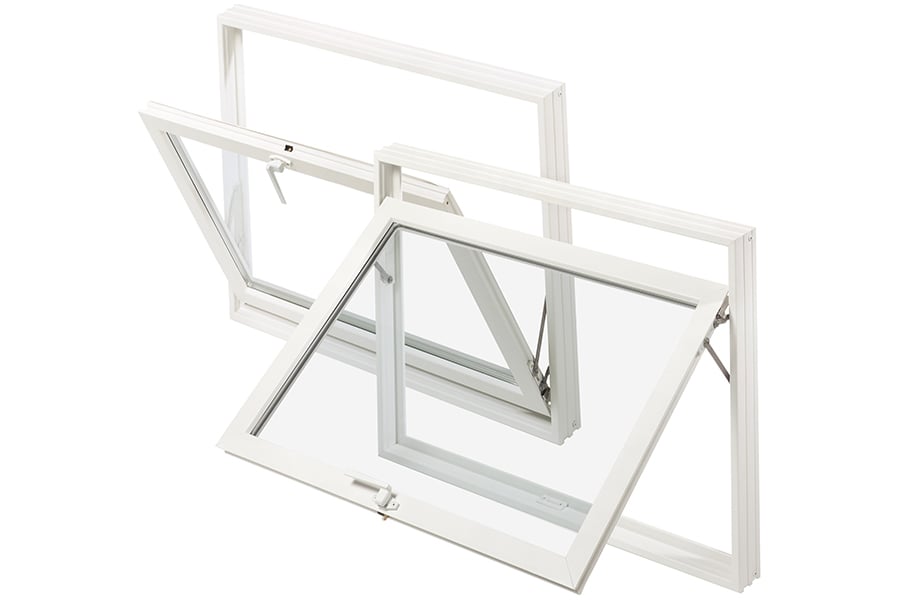
Replacement sashes are available for Andersen® basement windows manufactured between 1934 and 2009. Two options were offered: a hopper (shown on the left) and an inswing awning window (shown on the right).
The best basement windows for a new construction home
Depending on the size and style of your basement, lots of different windows might work. If you have a walk-out basement, for example, almost any window will work. But there’s one window we like in nearly any new construction basement, and that’s the casement.
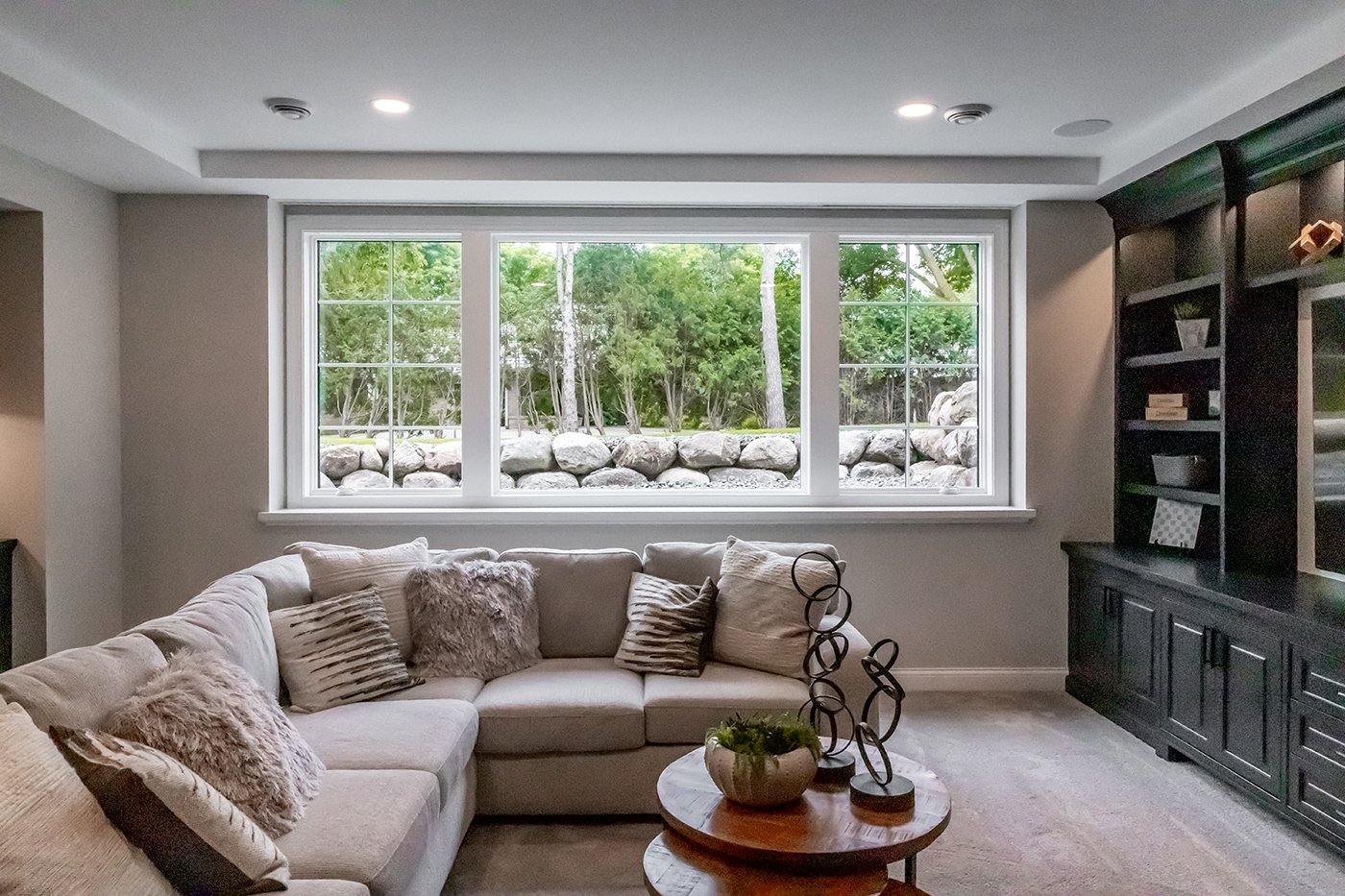
Casement window
Where it works well: This window can be sized large enough to meet egress requirements. It’s also one of our most energy-efficient windows since it compresses into its frame when the wind blows against it. Crank it open — it hinges on the side, like a door — to bring in lots of fresh air.
We recommend it for new construction homes because it’s vertically oriented. This means it will require a fair amount of above-ground wall space or a window well to fit into a basement. Of course, this doesn’t mean a casement can’t be made shorter to work in a replacement scenario. It’s just easier to create the right conditions for a casement when you’re building a new home.
An option to consider: 100 Series Casement Windows made of Fibrex material.
Why 100 Series windows in a basement?
You might have noticed we keep recommending 100 Series windows for the basement. There are several reasons for this, but the top reason is that 100 Series products are made of Fibrex material, which is virtually maintenance free. It’s also well suited for conditions close to the ground as it resists rot and decay.
In addition, replacement windows are available throughout the 100 Series product line, including our favorite basement window choices: awning, gliding, and casement. Insert replacements work well in basements because they fit inside an existing window frame — so long as it’s plumb, level, and square — meaning you don’t have to disturb the concrete, which makes the replacement process simpler.
What’s the most energy-efficient basement window?
The casement is one of our most energy-efficient windows, but there’s one that’s even better in this respect and that’s the picture window. Picture windows are energy efficient because they are “fixed,” meaning they don’t open (or operate). These windows can brighten up a dark basement, they’re available in a variety of sizes, and they’ll help improve your home’s energy efficiency.
An option to consider: The A-Series Picture Window is our best-performing picture window. Made of wood that’s protected by fiberglass, this window is weather resistant and maintenance free. Boost its performance even further by opting for triple-pane glass.
Just remember, a picture window won’t work if you need an egress window. Not sure what egress means exactly? We'll clear that up next.
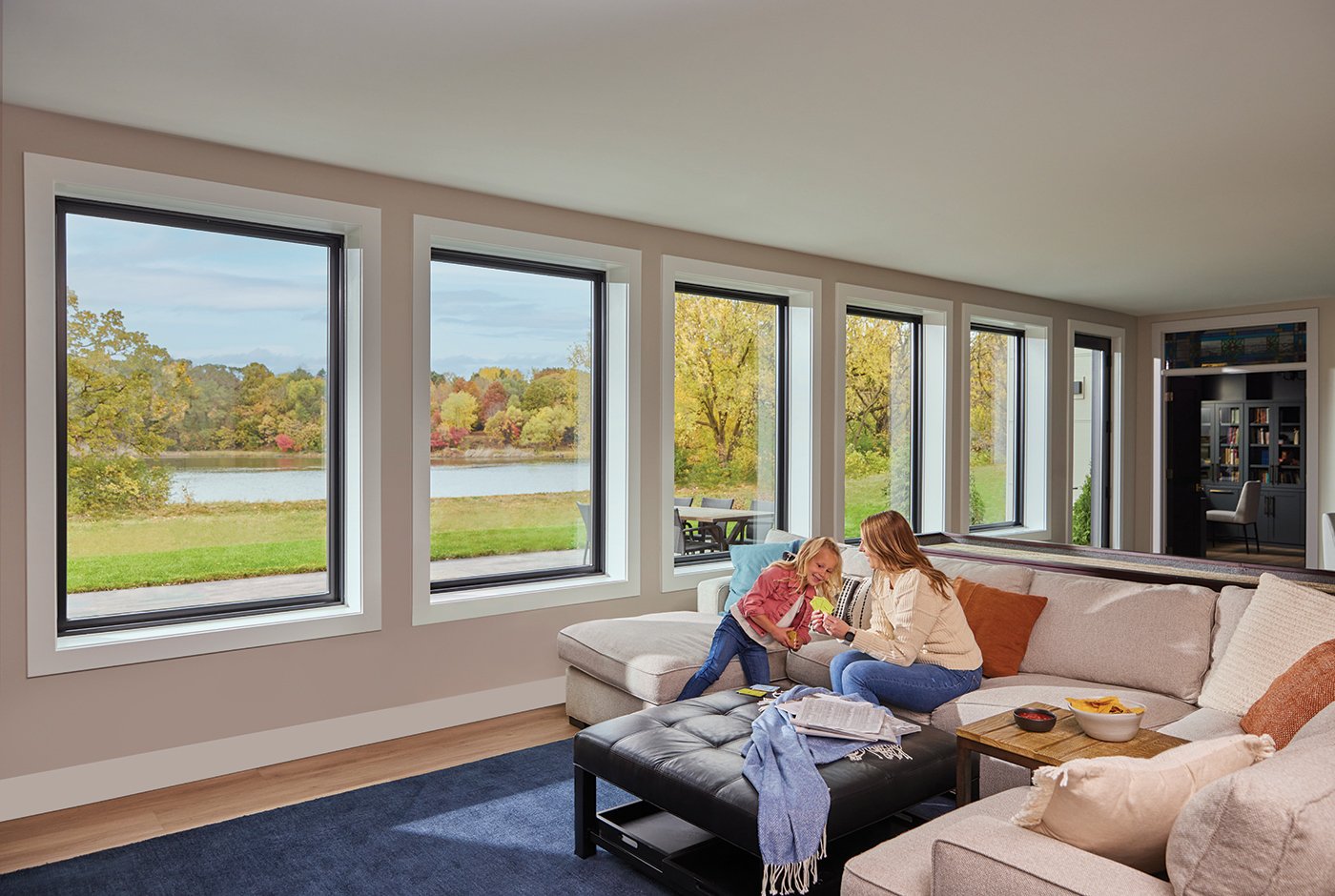
A-Series Picture Windows and an A-Series Hinged Patio Door let lots of light into this basement living room in a new construction home.
What is an egress window?
In case of a fire or other emergency, building code requires certain rooms to have openings (windows or doors) that allow for escape or rescue. You'll commonly hear this type of opening referred to as an “egress window” — an egress is an exit. Although building codes vary by location, most require at least one emergency escape or rescue opening in rooms where people sleep. If your basement has a bedroom, chances are this type of opening will be required.
In order for a window or door to qualify as an emergency escape or rescue opening, you must be able to open it from inside the room without keys, tools, or special knowledge. Building codes will specify the size of the opening and even how large the window well should be outside if the window is below ground level.
What is the smallest window meeting egress requirements?*
Here are the common minimum dimensions required of emergency escape or rescue openings by the International Residential Code (IRC):
- Minimum net clear opening area of 5.7 square feet (exception of 5 square feet for openings at ground level).
- Minimum net clear opening height of 24 inches.
- Minimum net clear opening width of 20 inches.
- Maximum sill height of 44 inches measured from the finished floor to the bottom of the clear opening. Note: Clear opening is the area between the window sash and the frame when the window or patio door is fully opened. Need a quick primer on parts of a window?
State and local building codes can vary, as can emergency escape or rescue opening requirements for window replacement versus new construction. Your builder or contractor should be familiar with what the local building code requires. If you’re taking on a DIY basement project, it's important to check with your local code official about what code might apply.
Once you understand the requirements in your locale, you can make sure your desired window will meet minimum dimensions.
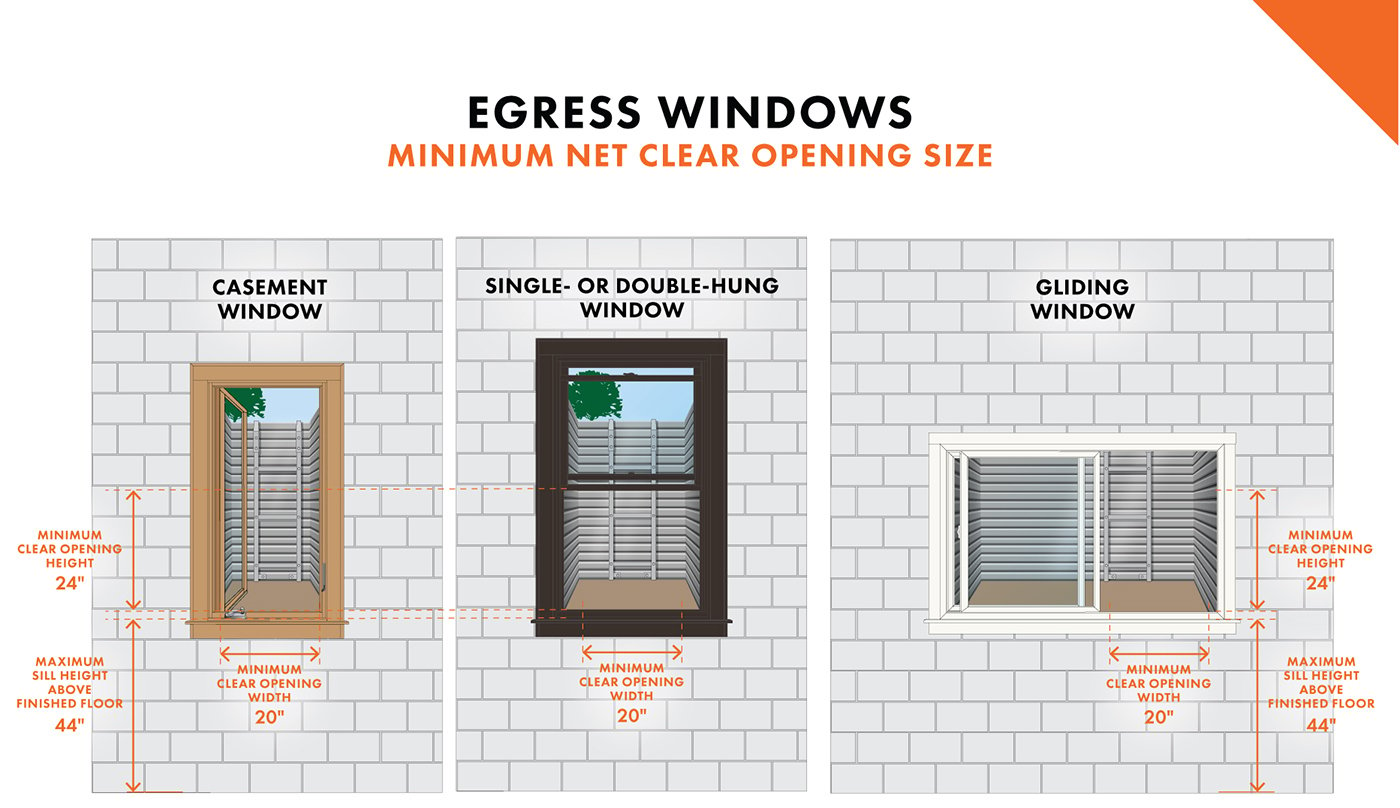
Basement windows and security
If you’re concerned about the security of your basement windows, here are some options to consider:
- Stronger glass: Tempered glass is four times stronger than standard glass and more difficult to break. It’s available as an upgrade on our windows. It may also be required by code in certain areas.
- Automatic locks: Certain windows, such as the 100 Series Gliding Window, have locks that automatically engage when you close the window, so you never have to worry about someone forgetting to lock up after they close the window.
Your basement window FAQs answered
What are the most common basement window sizes?
What’s the best frame material for a basement window?
*Visit andersenwindows.com/warranty for details
What size window is required for a basement bedroom?
In order to meet egress requirements* — what building codes typically require for emergency escape or rescue openings in bedrooms — the International Residential Code (IRC) has minimum dimensions for windows. These minimum dimensions are for the clear opening, which is the area between the window sash and frame when the window is fully opened.
The minimum clear opening dimensions for an egress window are: 24 inches high by 20 inches wide with an area of 5.7 square feet (exception of 5 square feet for openings at ground level). In addition, there’s a maximum sill height of 44 inches specified in the IRC.
Building codes vary from location to location, so always check with your local code authority to find out requirements.
Can I install basement windows myself, or should I hire a professional?
Hiring a professional to install your basement windows is usually a good idea and even more so when the window is below grade in a window well. In this scenario, large rain events bring the potential for water buildup in the window well. This means the installation must be meticulous. Another consideration is that basement walls are often poured or block concrete. Installing a window in this type of wall requires a non-standard step, building a window buck. For all of these reasons and more, we recommend hiring a contractor to install your basement windows. And the good news is that we can help you find an Andersen certified contractor in your area.
How often should I clean and maintain my basement windows?
How can I improve ventilation in my basement with windows?
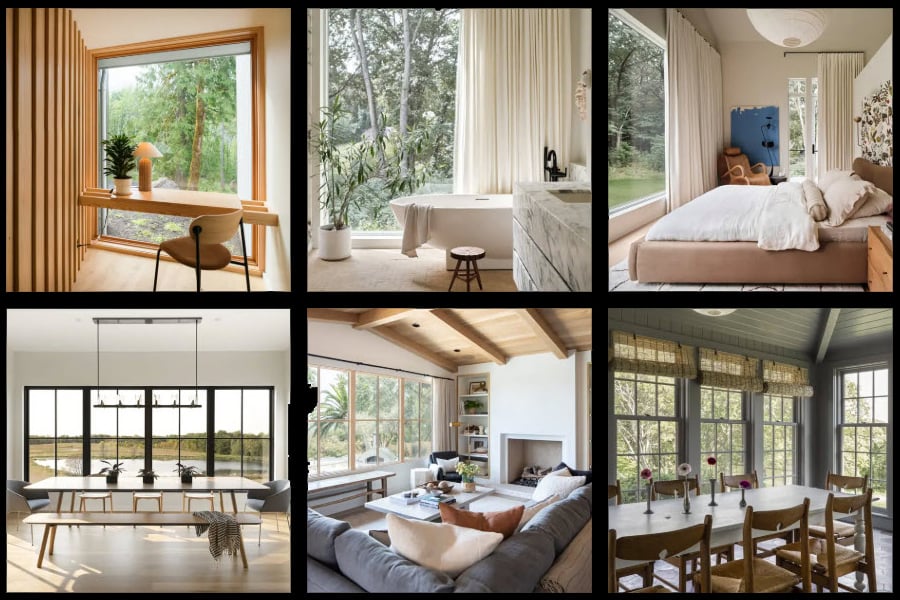
What about the rest of the house?
*See your local code official for code requirements in your area.



